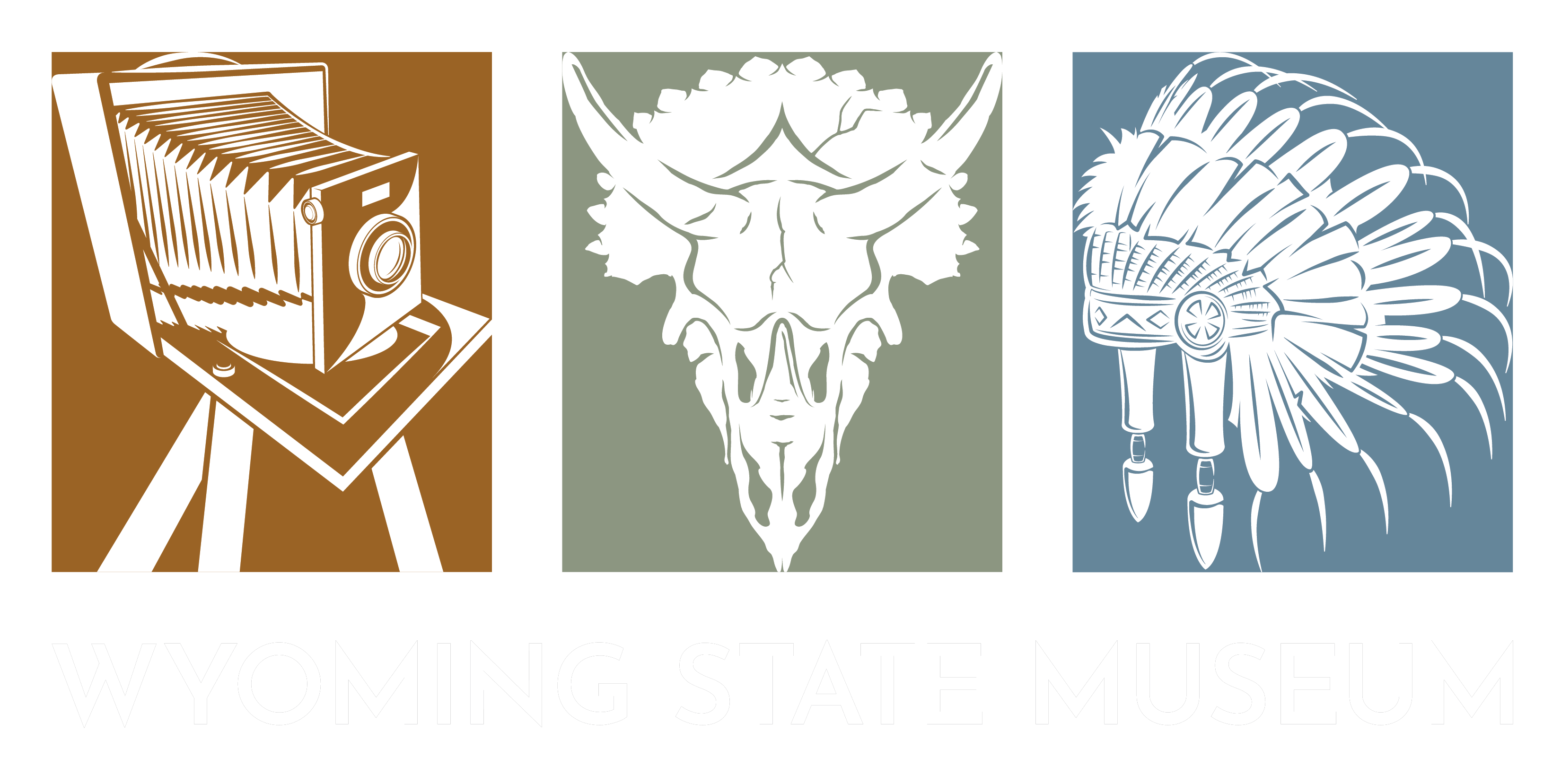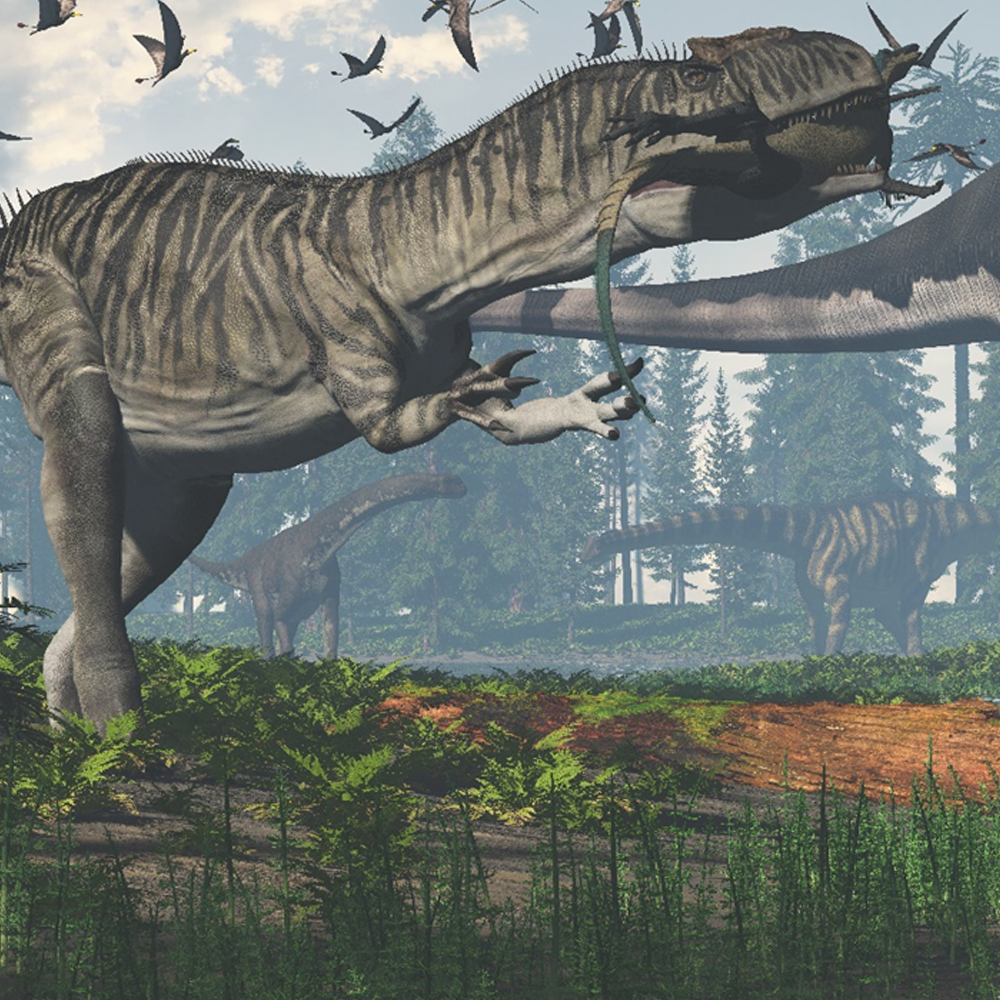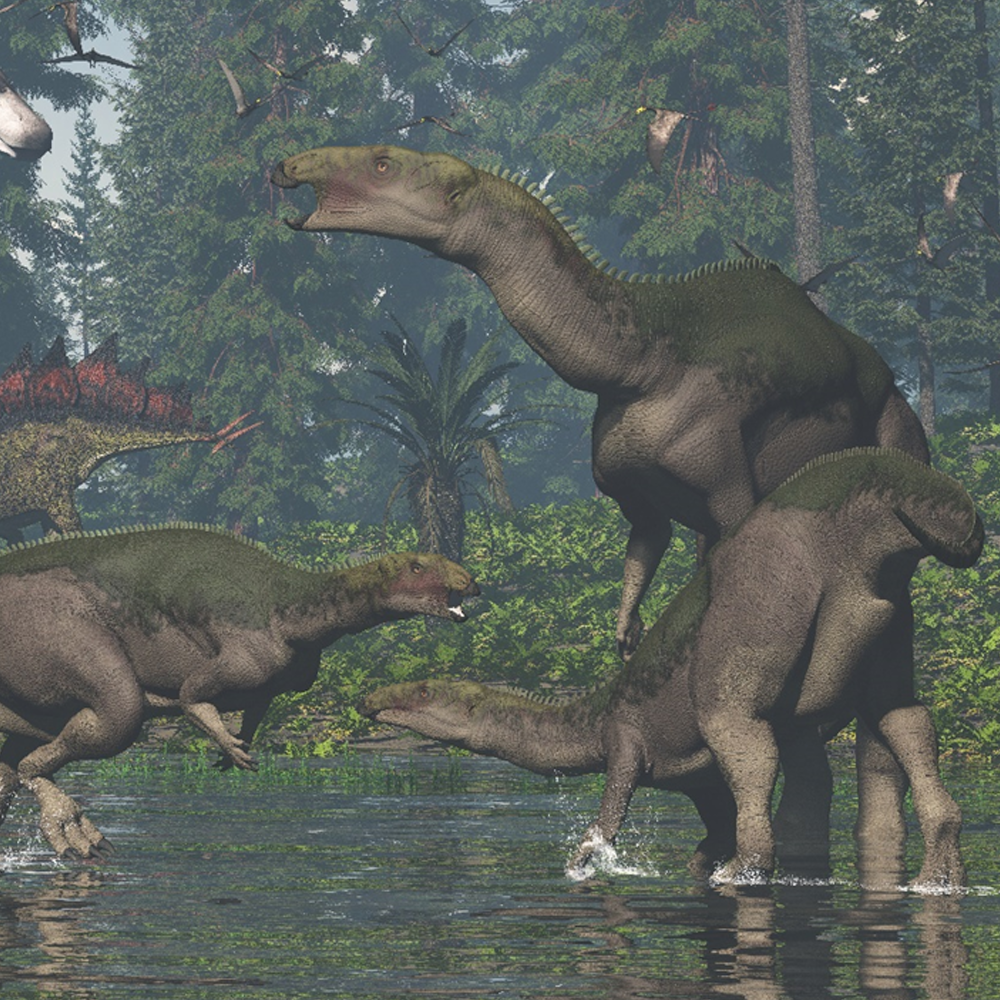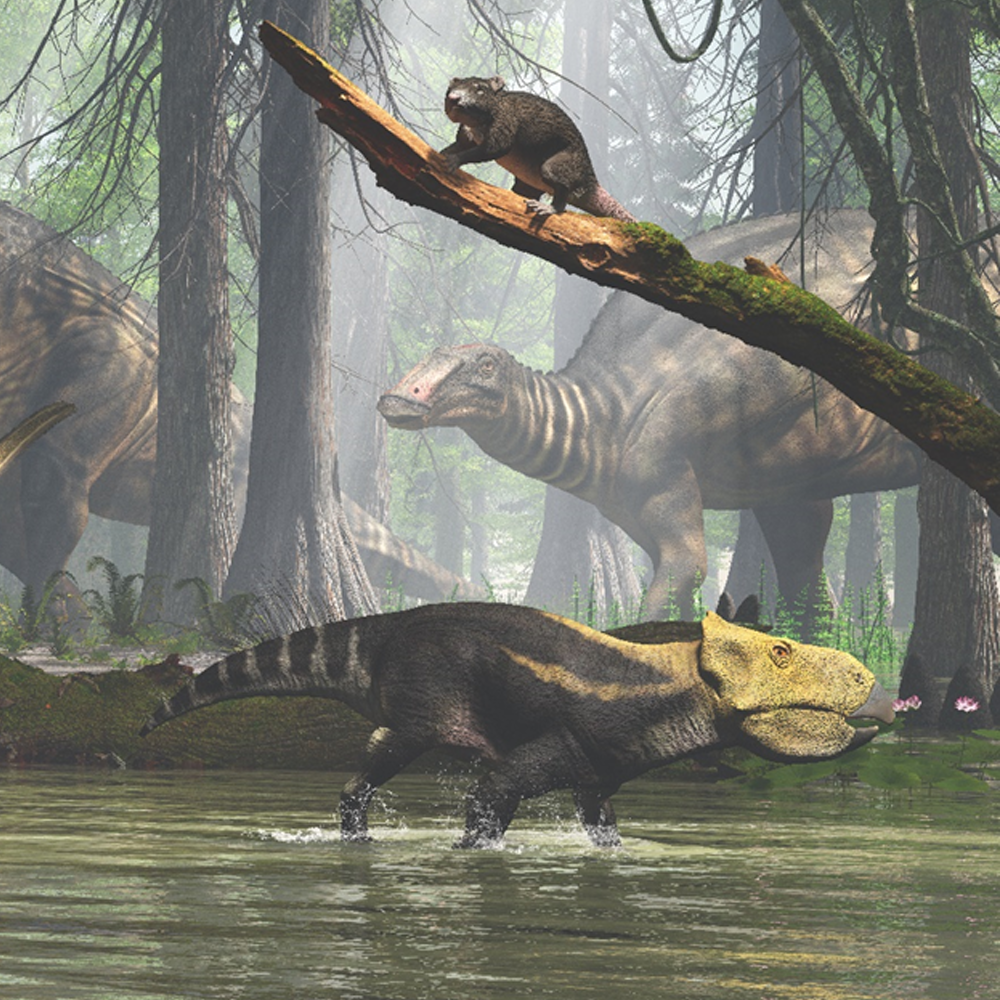Time: 60 Minutes
Grades: 3-5
Next Generation Science Standard: 3-LS4-1
How do paleontologists and paleoartists use the evidence that fossils provide to learn about dinosaurs and create paleoart? What clues can fossils tell us about animals and plants that lived long before humans? What can they tell us about Earth's habitats? During this interactive program, your students will use fossils, technology, and art to answer these questions.
⮜⮜ Back to Virtual Field Trips
Overview:
This new program is based on 3rd grade science standards, but can easily be adapted to older elementary school levels as well. In this program, your students will have multiple lessons about fossils and engage with many different activities.
How is this Virtual Program Different than the On-Grounds Version?
While the On-Grounds Field Trip version of this program breaks the educational lessons into 15-minute discussions with activities in between, the Virtual Field Trip version is a little different. In our program, we'll go through all the educational lessons as one program. Then, all of the activities will be done as classroom activities in your school. The worksheets, files, and 3D scans for these activities are all below.
Educational Lesson - What is a Fossil: 20 Minutes
In this lesson, we are going to introduce basic concepts that we'll expand upon during the program. We'll discuss who paleontologists and paleoartists are, and what they do. We'll also dive into what fossils are, how they're formed, and discuss some common differences - like body fossils vs. trace fossils.
Education Lesson - What Fossils Tell Us About Animals: 20 Minutes
In this lesson, we'll talk all about the information we can learn from fossil evidence. We'll look at some great examples of how paleontologists compared modern animal bones to dinosaur fossil bones to learn about the dinosaur. We'll also see how this evidence led to changes in how the dinosaurs were depicted in paleoart.
Education Lesson - What Fossils Tell Us About Habitats: 15 Minutes
The last thing we'll do in the lesson part of the program is to discuss what fossil evidence can tell us about habitats that used to be here millions of years ago. We'll use examine one location in Wyoming (Fossil Butte National Monument) as a case study. Your students will be given four fossils that were found in this area; they'll then have to come up with what habitat they think used to be there. Then, they'll be given four more fossils. How does this change their hypothesis? Finally, we'll give them four more fossils so they can get the full picture.
Classroom Activity - Can You Outrun a Dinosaur: 15 Minutes
Trace fossils give us so much great information about how dinosaurs moved and ran. This fun activity has your students measure their legs, and then choose which of the dinosaur options we show them have the same length of legs as they do. Afterwards, they'll race off against their dinosaur by comparing the distance they travel to the distance their dinosaur traveled with the same number of steps.
For this activity you'll need to download the two worksheets from the files, below. One worksheet is for your students and one is for you, as the teacher.
Classroom Activity - What Fossils Tell Us About What Dinosaurs Ate: 20 Minutes
Your students will work in their small groups and use 3D scans of modern animal skulls (shown below) to decide which skulls belonged to carnivores and which belonged to herbivores. They'll create lists of what characteristics are shown in all the carnivore skulls and all the herbivore skulls. Afterwards, they'll be given a model of a dinosaur skull; they'll use the characteristics they came up with to determine if their dinosaur ate plants or meat.
For this activity your students will need access to the 3D scans of the modern animal skulls, below. If you students have devices, you can just direct them to this website. If they do not have devices, you can go through these scans on your computer so they can see them. After they go through the modern skulls, they'll need access to the dinosaur skull 360 degree photos. Assign each group only one of the dinosaur skulls. The 3D scans and the 360 degree photos are both below. They'll also need the worksheet from the files.
Classroom Activity - What Fossils Tell Us About Dinosaurs Adaptations: 15 Minutes
Your students will be given a paleoartist's sculpture of the same dinosaur they examined in the last activity. They'll choose one adaptation on the dinosaur's body (plates, spikes, size, teeth, claws, beak, etc.) and then - using animals they know today - hypothesize what their dinosaur used that body part for.
For this activity, your students will need the same 360 degree photo of their dinosaur skull they used in the last activity. They'll also need the 360 degree photo for the paleoart model for their dinosaur and the worksheet from the files, below.
Science Next Generation Science Standards:
This field trip is designed to meet the Next Generation Science Standard 3-LS4-1. This includes:
- Disciplinary Core Ideas: LS4.A
- Crosscutting Concepts: 1, 3, and 6
- Science and Engineering Practices: 4 and 7
It has been approved to meet these standards and objectives by the Wyoming State Department of Education Standards Team.
This field trip may also meet other standards for other grades, within LS4 or other Life Science Standards. Feel free to reach out to the Curator of Education if you would like certain elements discussed in your program.
Funding for this Field Trip:
This project was made possible in part by the Institute of Museum and Library Services (IGSM-249033-OMS-21). The views, findings, conclusions, or recommendations expressed in this exhibition do not necessarily represent those of the Institute of Museum and Library Services.
Skull Scans for the "What Fossils Tell Us About What Dinosaurs Ate" Activity
Modern Animal Skulls for the First Part of the Activity
These 3D skull scans were created by the University of Wyoming, and offered free of charge to educational institutions around the world. The Wyoming State Museum thanks the University of Wyoming for their contribution to our educational programming.
Mystery Animal 1
Mystery Animal 2
Mystery Animal 3
Mystery Animal 4
Mystery Animal 5
Mystery Animal 6
Mystery Animal 7
Mystery Animal 8
Mystery Animal 9
Mystery Animal 10
Mystery Animal 11
Mystery Animal 12




